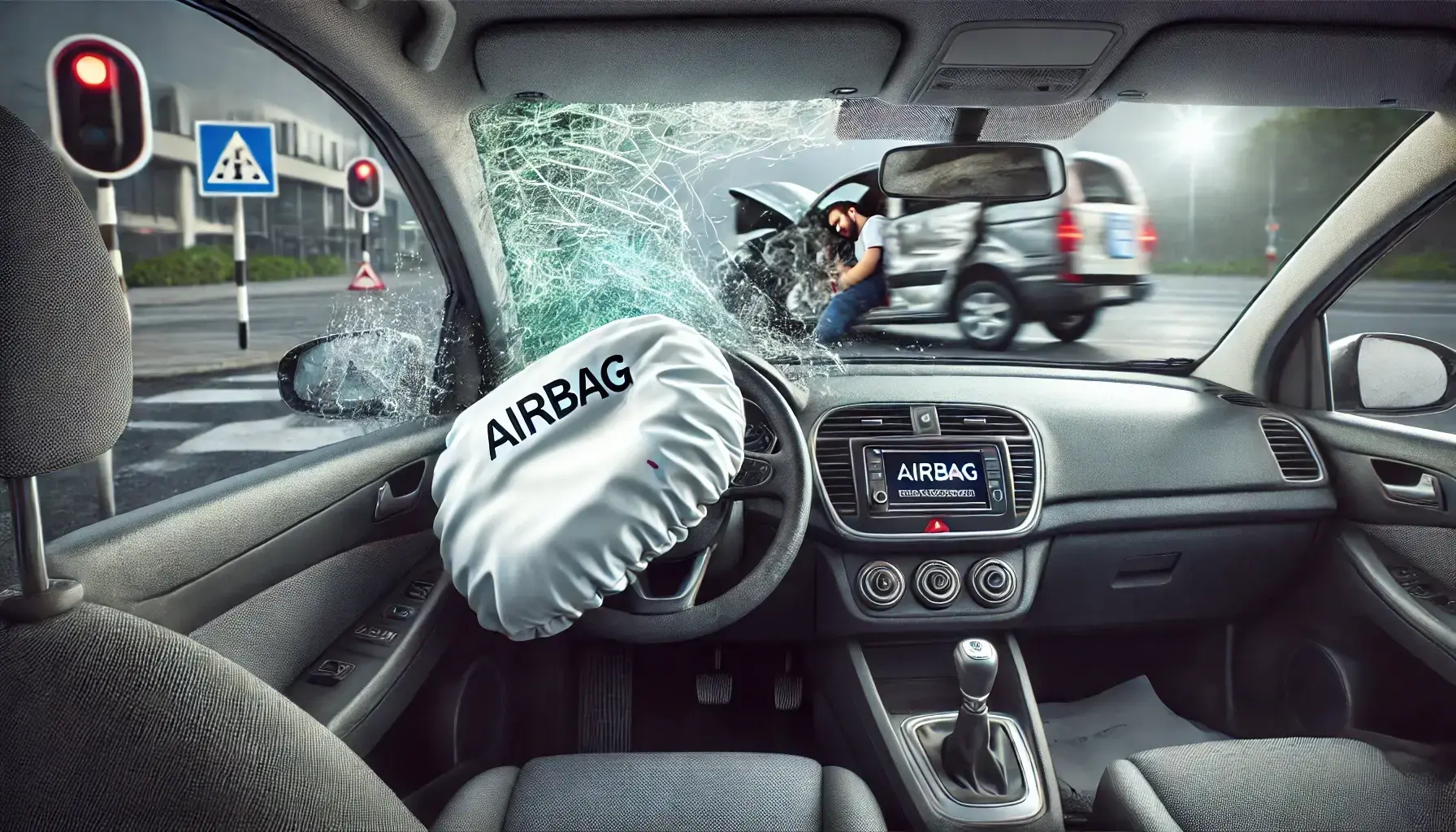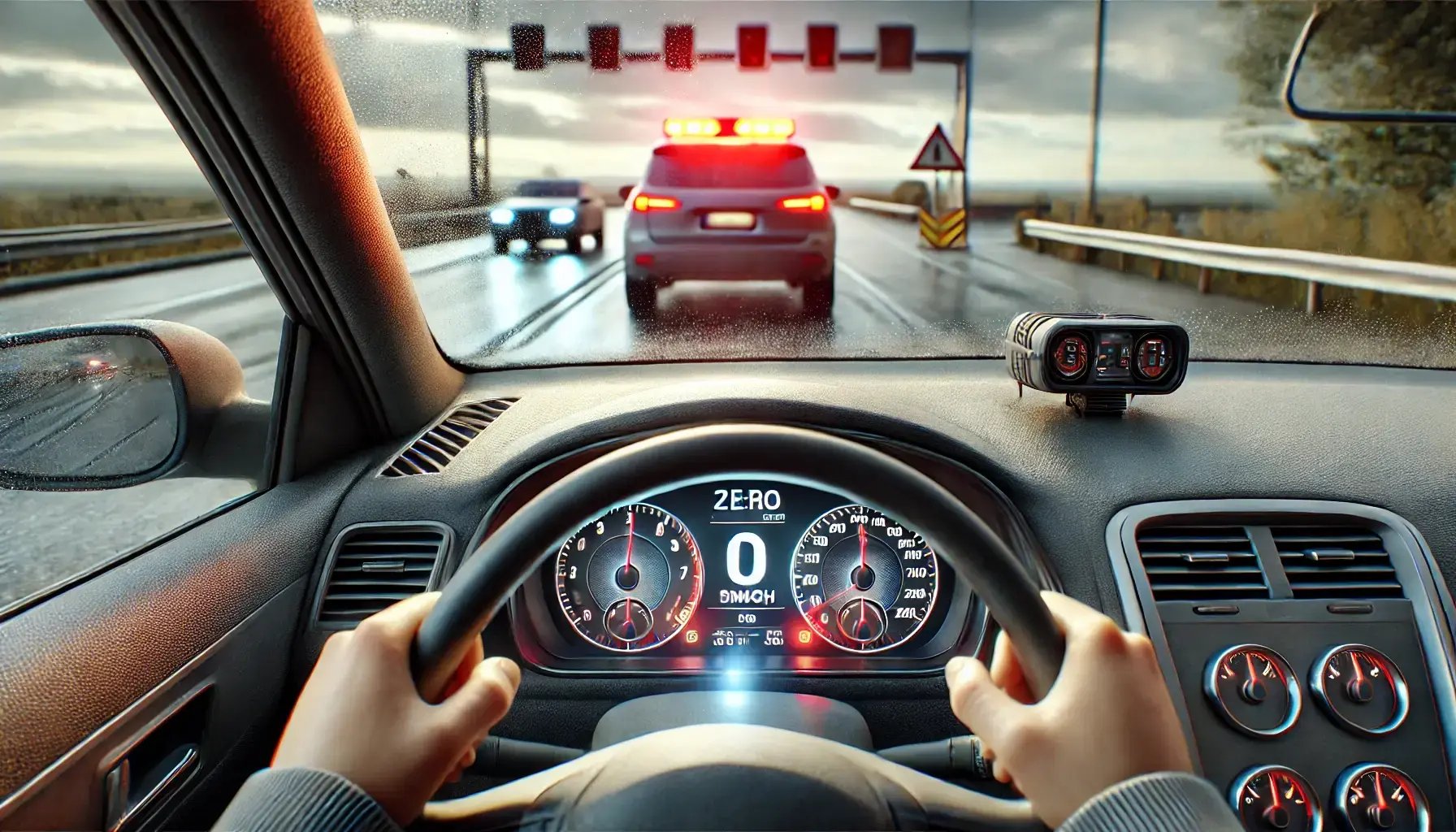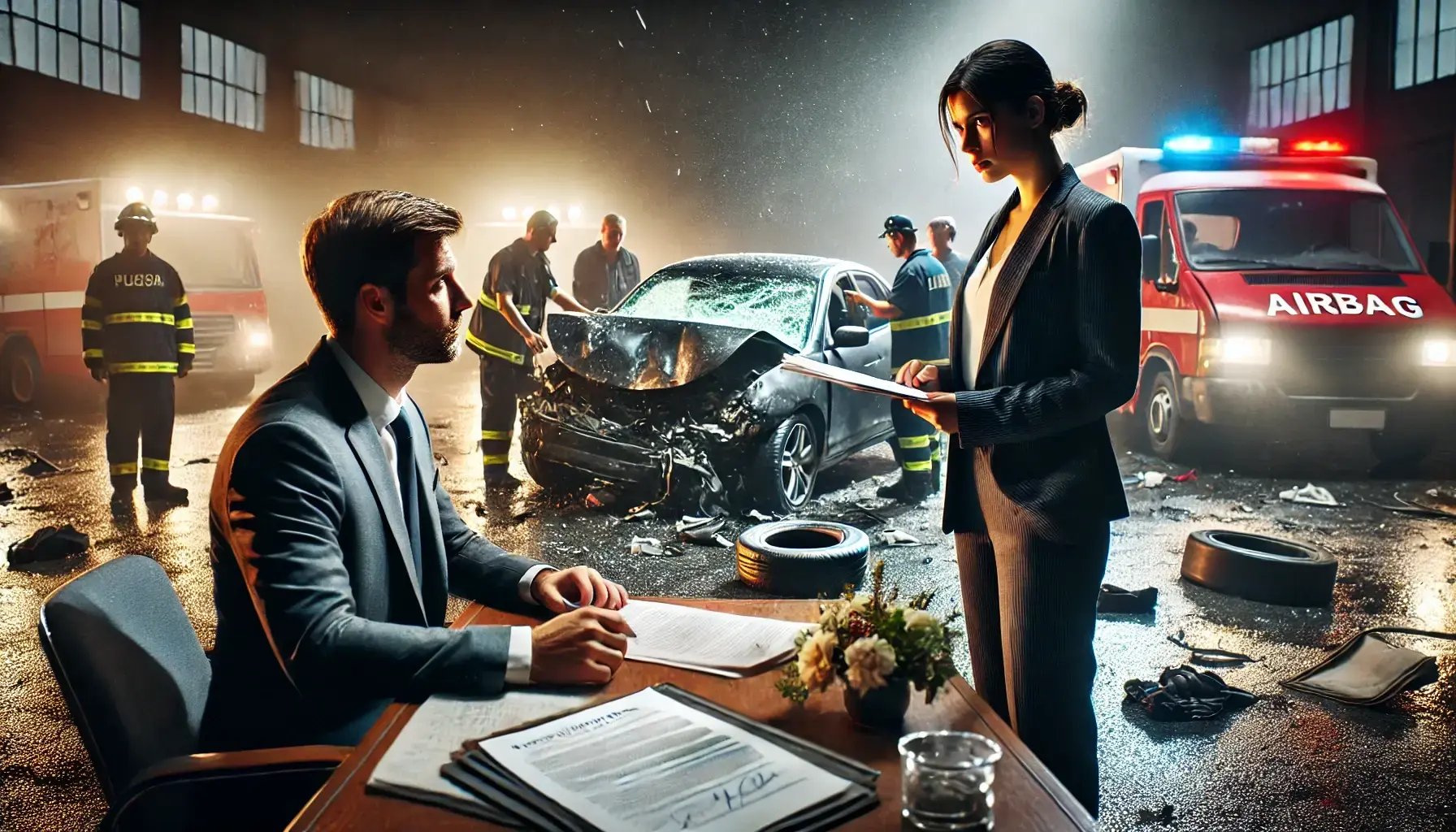Do I have a case if my airbags didn’t deploy during a car accident?

Legally reviewed by:
Daniel Smith September 11, 2024
Automobiles have come a long way since the 1890s when they first became available on the market. Many technological improvements have made them safer and more reliable pieces of technology. And speaking of safety, one of the most popular safety technologies most cars now have is airbags.
Airbags are inflatable cushions designed to protect occupants of a car in case of a collision, and you probably wouldn't buy a car if you knew that its airbag system was faulty. You've likely even watched multiple crash test videos and decided to buy a particular vehicle because you believe it to be safer with good airbags.
So, what happens when this car that has been marketed to you as having great airbags does not work? You've been in an accident, and your car didn't deploy airbags, leaving you injured. Do you have a case? Yes, you do.
If your airbags fail to deploy in an accident, you could sue the manufacturers of your car, the driver who caused the accident, or any other party that may be liable on your attorney’s advice.
In this article, we inform you why airbags may not deploy during a car accident, how you can determine or prove liability when airbags do not function properly, and how you should seek legal assistance.
When should your airbags deploy in a crash?
According to the National Highway Traffic Safety Administration, airbags should deploy within 1/20th of a second following a moderate or severe crash. They then define a moderate or severe crash as hitting a solid barrier at 8 to 14 mph or higher (or a parked car of a similar size at 16 to 28 mph or higher). But your speed isn't the only thing that determines the deployment of airbags.
Given the speed at which airbags deploy, it could be more dangerous in certain instances to deploy one. Car manufacturers, therefore, use a complex system of sensors and indicators to determine when it is safer to deploy an airbag.
Common reasons why airbags don’t deploy during a crash

Even though you will expect an airbag to deploy with almost every accident, some accidents will leave you wondering why an airbag didn't deploy. So here are some of the more common reasons you might not see airbags deployed after a crash.
Vehicle deceleration vs. speed
Car manufacturers have often stated that a car's speed just before a crash is not the primary determiner of airbag deployment but rather the level of the vehicle’s deceleration or how sudden the stop is. The change in a car’s velocity is the biggest indicator of deceleration.
Manufacturers determine an ideal deceleration level while developing the car. If a car crash does not cause a velocity change that exceeds the predetermined deceleration level, the airbags are unlikely to deploy.
The nature of the hit
Since deceleration is the primary determiner of airbag deployment, the nature of the collision, especially what you hit during the crash, will affect airbag deployment.
This means that airbags are more likely to deploy if you crash into a wall than if you crash into another vehicle because walls are more solid and won't move, unlike a vehicle (or even a smaller vehicle) that won't cause as much deceleration.
Direction of impact
The type of collision will also determine whether airbags will be deployed. Rear-end accidents, for instance, rarely trigger the deployment of any airbags. However, the rear seat or frontal airbags may deploy if the detected collision force is significant enough.
Similarly, when a rollover collision is detected from enough side impact, side airbags and sunroof airbags (if you have them) may be deployed, but frontal airbags may not.
More importantly, if the impact is not horizontal, it is more likely that your airbags will not deploy since sensors are typically configured to detect and react to forces on the vehicle’s horizontal plane. So, if something lifts you from the ground and leads to a crash, your airbags may not deploy.
Advanced airbag systems
Advanced airbag systems rely heavily on multiple sensors before deploying.
They track if you were wearing a seatbelt before the crash, and the system may determine that the belt should be sufficient to protect against any significant injuries since seatbelts are still the primary protection mechanism against car crash injuries. However, an advanced airbag system is more likely to deploy if you were not wearing a belt before the crash.
These advanced systems also detect passengers' position and size to determine airbags' deployment. Since the force of frontal airbags could harm children under 13 years old, airbags may not be deployed where the sensors detect a small passenger in the front seats.
Faulty airbags
A fault with your airbags or detection system may also cause them to not deploy properly during a car crash. However, this cause is largely avoidable because once there is a problem with your airbag system, it should appear on your dashboard. If you get your car checked out at a repair shop immediately, notice this indicator, and get the problem fixed, you should not experience this.
Replaced airbags
This is most common with used cars that have previously been in an accident. It is likely that the airbags of these cars have been deployed in the past and were then replaced inappropriately or not at all.
So, if you are involved in a crash with these cars, their airbags may be fundamentally faulty and not deploy effectively, even if there are airbags to deploy. To avoid this, you should only purchase used cars from verified used car dealers when you can.
Can you sue if your airbags didn’t deploy during an accident?

You can sue if your airbags do not deploy properly in the event of a car accident. Multiple parties may bear liability depending on the exact circumstances, and we examine them below.
Manufacturers
The manufacturers of your car or the airbag could be liable if your airbag fails to deploy in an accident. Manufacturers generally have a duty of care to ensure that harm is not caused to consumers because of their products - or, in this case, the failure of their products to carry out their intended purpose and the purpose for which a consumer purchased it - manufacturers could be liable.
In Sipes v. General Motors Corp., 946 S.W.2d 143 (Tex. App. 1997), Ricki and Jamie Sipes purchased a new Pontiac Firebird but were involved in an accident where the airbags failed to deploy, and Jamie suffered injuries as a result. In the same suit, they also sued Siemens Electronic, the airbag manufacturer.
The court found that since the Sipes were provided with material that suggested that the airbag would deploy upon severe frontal impact, and it did not, in this instance, deploy upon severe frontal impact, they were entitled to partial summary judgment.
Also, in Flury v. Daimler Chrysler Corp., 427 F.3d 939 (11th Cir. 2005), Flury fell asleep at the wheel while wearing a seatbelt. Then, his 1996 Dodge Ram pickup truck went through a ditch at a speed greater than 15 miles per hour and hit a pine tree, but his airbags did not deploy.
At District Court, a jury awarded Flury $250,000 for his enhanced injuries, and the judgment ordinarily would have stood. However, it was overturned on appeal because the defendants could not ascertain the vehicle's location for examination, which constituted spoilage of evidence.
Manufacturers could even be liable before an airbag fails to deploy if they knew its potential failure but did not warn customers. In re ZF-TRW Airbag Control Units Prods. Liability Litigation, 2:19-ml-02905-JAK (MRWx) (C.D. Cal. Nov. 28, 2023), Toyota had to agree to a $78.5 million settlement for a class action lawsuit against them because some of their vehicles were equipped with faulty airbags that could fail to deploy in a crash.
Third parties
You could also legally seek compensation from third parties partially responsible for the car and its airbag. These parties could include a previous owner, distributor, rental, or repair shop. However, to successfully recover in an action against third parties, you must establish that the party had a duty they failed to carry out.
In Sigler v. American Honda, 532 F.3d 469 (6th Cir. 2008), Sigler was driving a certified pre-owned Honda Accord equipped with a driver’s side airbag at 70 mph when her car veered off the road, and hit a tree, uprooting the tree. But even though the car met deceleration requirements, it did not deploy her airbag.
So, she sued the defendant, the distributor from whom she purchased the car. The Court here reversed the summary judgment granted for the defendant at the district court and held that Sigler raised genuine issues surrounding the defectiveness of her airbag.
When there is a genuine issue of material fact that can be traced to a repair shop’s failure to act as they’ve been contracted in the repair or replacement of an airbag, you may also be able to sue them if your airbag fails to deploy according to Tutino v. Rohr-Indy Motors Inc., 127 N.E.3d 248 (Ind. App. 2019).
Another driver
Naturally, with a car crash, you may pursue legal action against another driver, especially if that other driver was responsible for the accident. Note that the lawsuit here will not be predicated on your airbag's failure to deploy but only on any injuries and damages you have sustained due to the accident.
Determining liability if your airbags didn’t deploy

When airbags fail to deploy, liability will influence who you should bring legal action against, so determining who is at fault is very important. Liability will depend on the nature of the car and whether there were any airbag-related events leading up to the accident.
The car manufacturers would likely be liable if an airbag doesn’t deploy with a new car you purchased from a verified distributor. You may also bring action against the airbag manufacturer, but it might be challenging to establish liability against them since the airbag will likely have been manufactured according to the demands or specifications of the car manufacturer.
With pre-owned cars, the dealership or whoever sold it to you might be liable if they represented that everything concerning the car was fine before you purchased it. A repair shop may equally be liable if you contracted them to repair or service your airbag systems, and they represented to you that everything was fine after the repairs.
However, no other party will likely be liable if, before the crash, the car warned that there were problems with the airbag system or the supplemental restraint system (SRS) and you failed to repair that problem.
Proving liability
To prove any party’s liability, you must be able to establish the following:
- That the airbags should have deployed: Proving this might involve showing that your vehicle, in the accident, exceeded the required deceleration threshold. Alternatively, you may establish that you were going at a speed that should have triggered airbag deployment upon a crash.
- That the airbags failed to deploy due to a defect or faulty installation: You must then establish that the airbag failed to deploy because it was a lousy airbag, the sensors were defective, or its installation was incorrect. If, for instance, an airbag system did not deploy because it detected that you sat a child in the front seat, that would be different.
- That the defect or faulty installation was the responsibility of the defendant: Then you must prove that the person you are suing was responsible for making sure the airbag was good and properly installed, and they failed in that duty.
- That you suffered damages or your injuries were worsened because the airbag failed to deploy: Even if you ordinarily would have suffered injuries because of the accident. Still, if you can show that you suffered more severe injuries because the airbag failed to deploy, you would satisfy this requirement.
What type of injuries can defective airbag accidents cause?
Since the primary design of airbags is supposed to cushion the effect of impact on the face and chest, the failure of an airbag to deploy could result in some severe injuries like:
- Concussions
- Traumatic brain injuries
- Eye injuries
- Broken ribs
- Punctured lungs
- Bruises and cuts
How to gather information for your case
To gather relevant evidence for the failure of an airbag to deploy, you should do the following:
- Take pictures and videos of the damage to your vehicle and show that the airbags did not deploy. If you have sustained injuries, you should also take pictures of your injuries.
- If you have injuries, track your medical expenses. Keep records of hospital procedures, treatments, bills, and receipts.
- Witness accounts of the accident will also be important if you can get them. A witness statement will help to establish facts like the speed you were traveling, the nature of the collision, and your injuries.
- Get a copy of the police report on the accident. The police report will help establish that you were not negligent by noting if you wore your seatbelt.
Police reports may not be admissible in court. However, the police officer who investigated could testify if elements of the report are disputed. - If necessary, get an expert technician to examine the car and carry out tests without significantly tampering with the car. This is extremely important because expert technicians can establish facts like your sensors being faulty airbags.Securing an expert technician who could serve as an expert witness could be tricky, and it is best to do so with an attorney's help.
Seeking legal assistance
Legal assistance is crucial if you intend to achieve success in a case of your airbags failing to deploy. Not only will lawyers advise on the best course of legal action depending on the circumstances, but they will also help with investigation and gathering evidence, allowing you to focus on getting better if you have severe injuries.
Lawyers may also help negotiate settlements when there is a settlement offer since that is quicker and more cost-effective than obtaining a court verdict.
You should also remember that in cases where airbags fail to deploy, you could be going against big companies with their large teams of experienced lawyers. So, it is also best to have experienced lawyers with a track record of success in your corner.
Contact The Accident Helpers
At The Accident Helpers, we specialize in connecting people like you to brilliant and experienced personal injury lawyers who have won millions in settlements or verdicts for their clients over the years.
The best part is that you do not have to pay a dime when we help you! Schedule a free consultation with us today, and let us help you, too!




